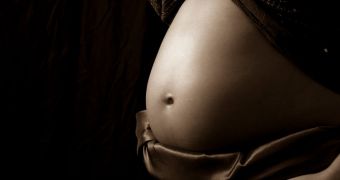As all mothers, or would-be mothers, must know, morning sicknesses are one of the major drawbacks of being pregnant. For a wide array of reasons, the female body is going through modifications as a child develops inside, and this leads to side-effects that are visible externally. But morning sickness is actually a good sign and shows that fetal development is progressing smoothly. However, in some instances, the condition can get out of control, and cause a lot of pain. Recently, researchers found that this aggravated form may be transmitted from mother to daughter, PhysOrg reports.
Known among healthcare experts as hyperemesis gravidarum, the aggravated form of morning sickness causes nausea and vomiting. This would be insignificant normally, but in certain women the condition causes near-constant vomiting, which in turn naturally leads to weight loss. Though only about 2 percent of all would-be mothers have the condition, most cases result in hospitalization so as to prevent undernourishment and associated disorders. Women suffering from hyperemesis gravidarum find it difficult to eat, and the lack of nutrients affects both them and their unborn children, doctors say.
In a worrying twist of events, researchers from the Norwegian Institute of Public Health, in Oslo, have found that the disease may actually be passed on from mother to her daughter at birth. This means that the daughter will in turn experience the same symptoms when she becomes pregnant, and that her daughter will carry the condition as well. Some of the most severe consequences of this abnormality include premature births and low birth weights, which can in turn cause a host of complications for the baby. Generally, manifestations appear before the 22nd week of the pregnancy.
The research was conducted on Norwegian registry data covering the period between 1967 to 2006, and featuring more than 2.3 million pregnancies overall. Hyperemesis gravidarum was discovered in more than 544,000 mother/daughter pairings, which is quite a number, the researchers say. Additionally, some 400,000 mother/son pairings were found to exhibit the correlation as well. The records used in the investigation included details about the mother's health status, all complications that arose at birth, a set of demographic data, as well as the condition of the child when he or she was delivered.

 14 DAY TRIAL //
14 DAY TRIAL //